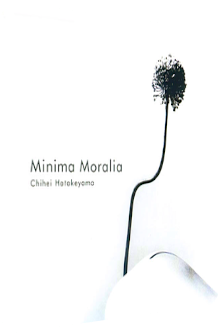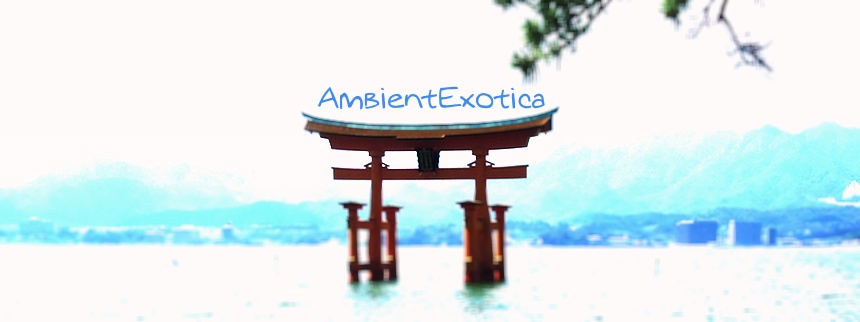
Chihei Hatakeyama
Minima Moralia
2006
Minima Moralia is the debut of the Tokyoite engineer and mastering afficionado Chihei Hatakeyama which was released in 2006 on the Chicago-based Kranky label. As is expected by the look at the then already well-stocked Kranky back catalog, Hatakeyama blends guitar layers with synth swirls and clinging chimes on seven tracks, creating a soothing Drone album that is almost entirely friendly and mollifying, with only a few microscopic hints of murkier or crunchier elements. Since this is an album by a Japanese artist, the listener instinctively expects a certain Far Eastern sound. And indeed does Hatakeyama deliver these certain tone sequences and quiescent gusts in his works… but not on Minima Moralia! The synth textures themselves may transport a meditative aura of contentment and peacefulness, but the melodies are constructed in a placeless manner, never hinting at Asian cliché-laden tone sequences. Such being the case, the focus on this album is already tightly set: it is mostly about the patterns and sound schemes, less about carved out melodies or catchy riffs; it's a Drone album par excellence, if you will. And yet are there quirky elements that tower above the mellifluous layers and ooze through the deliberately blurry thicket. The bells and whistles are such devices, and they aren't used in a contingent way but serve the purpose of mimicking insects, mammals and other nature-related sounds. There might be real field recordings interwoven, but they are filtered in such a way that you won't hear even one single life-like bird. But on the way through the seven tracks, there's warmth and blithe on every corner which lessen the seemingly cold traces of such a synthetic setup.
Bonfire On The Field launches the album in an inauspicious fashion, for I am always fearing clichéd, lackluster bonfire ditties in Ambient realms, so I remember my first encounter with this composition of over eight minutes back in 2007 which destroyed my greatest fear in an instance: the slow fade-in of powerfully coruscating stereo-panned bell textures, the regular appearance of a so-called lead sparkle, the hazy and heavily filtered crackles of that very fire as well as the injection of an additional guitar-based drone which camouflages the characteristic traits of this particular instrument altogether create a splendid synthscape of smoothly wafting breezes, with neither an alcove of space nor a stereotypical guitar slap in sight. It is only near the end that the pulsating two-note guitar layer takes over as some of the synths wane, but the guitar-related textures are enchanting, sizzling-hot and resemble the good parts of the psychedelic 60’s, namely the focus on the innermost thoughts and mind trips, not the commercialized, drug-abusing collective memory of people dancing in the mud. It is a strong opener, very friendly and uplifting; needless to say it retains its grace. Up next is Swaying Curtain In The Window, an ecclesial vignette of progression with a sun-soaked church organ layer, monotonous synth streams and an echoey electric guitar that occasionally rises above the oscillating, droning organ and the scintillating glockenspiel. The middle section sees a construction-related change, as several entangled acoustic guitar twangs take over the commando, with the glowing synth creeks remaining in the background. Since the guitars are put upfront, they are hybrids of a crunchy gentleness, totally entrancing and silky, playing a melody that is less about catchy riffs than about a hypnotic pattern. The song ends with a supposed field recording of a swamp or little pond, but a thick hissing fog is laid over the croaking frogs and cicadas, so it isn’t perceived as a break of style.
It is Starlight Reflecting Surface On The River that provides the first nocturnal landscape. And it presents a fully twinkling arrangement, be it the illuminating sine waves in-between the festive synth washes, the high-pitched piano tones and wildly clicking claves which resemble smooth jackhammers and crickets respectively, or the flangered complemental guitar strings that fathom the night and conflate with the black distance, bringing luminescence to the backing spaces. Even though the guitars are at times piercing and drop glints of acid, this isn’t a destructive device rather than an equipollent marker of light. And so it happens that the night-depicting offering becomes the glitziest composition of the album. Towards A Tranquil Marsh is another example of Hatakeyama’s progressive Drone tracks, launching with a golden-shimmering aura of potentially frosty, but evidently balmy layers that are enhanced by a belly-massaging bass drone. All of these layers fade out after about 90 seconds, making room for that certain bonfire melody I’ve feared at the beginning. Luckily, there are celestial synth waves in the background as well as animal patterns such as rhythmical clicks, bird-resembling space flutes and towering crystalline eruptions of the friendliest kind that make this melody not only tolerable, but truly beautiful, as it is suddenly in unison with the implied playground of nature. It is here where the guitar shines the most and Chihei Hatakeyama rescues a potentially haphazard guitar base frame with an evocative orchestra of synth particles and pulses that swirl around it in complete harmony. The beauty of this composition truly hit me from the middle section onwards. Astonishing that a track like this can make such a U-turn.
While Granular Haze fades in slowly with a synth string that resembles a female chantress, carefully placed clicks and crackles, sine sparkles, warm waves of accentuating bass drones and the most mesmeric-incisive superimposition of a colorful yet whitewashed cherubic synth breeze complete with hovering staccato pulses and whirring guitar scintillae, the next track Inside Of The Pocket places mercurial cyber birds behind another potentially lackadaisical guitar melody, and since it is really on the forefront this time, unperturbed from the backing noise, this track is my least favorite as a result. And yet it surprises me big time and presents more than a few of the Tokyoite engineer’s tricks, for example a short mild-mannered percussive section as well as glistening vibraphone droplets whose sustain resonates with the –now blurry – guitar creeks. It is the only instance where I cannot link back the track title to the aural panorama. It remains a secret. The final Beside A Well is the centerpiece of Minima Moralia, even though it is put at the end. In eleven minutes and thirty seconds, Hatakeyama delivers the most glaring and undoubtedly most-saturated Drone piece with several different phases and passages. Opening in a rather dusky fashion with a pulsating blood-red guitar layer, the composition then moves on to present the dreamiest section with shimmering, strongly spellbinding synth washes and a carefully adjusted stream of pink noise. If there is one section on the whole album that resembles the Cologne blueprints of the Pop Ambient formula, this would be it. The third section encapsulates unsuspectedly dark guitar chords which form a ephemeral melody of approximately nine notes that is admixed to a floating river in the distance, while the final phase presents the titular well in its fullest form, with echoey white noise injections and Boards Of Canada-esque effervescent synth motifs which shuttle between muffled and polished states. With these enormously catchy spirals intact, the song fades out for good.
Minima Moralia is a compelling debut that inherits the characteristic traits of the Kranky label and fuses them with certain Japanese attributes like the crystalline tone regions of the plinking bells and the calm tranquility of the synth- and guitar-fueled textures. Despite its title, the album isn't overly minimal, but resplendently structured. Surprisingly enough are there no traces of Far Eastern timbres or tonalities on any of the seven compositions, and while the avoidance of such clichés or stereotypical settings is undoubtedly refreshing, it can also be a tiny disappointment for some listeners who link an artist's name to the kitschy folk elements of his or her country of birth. Minima Moralia is something entirely different. The inclusion of heavily altered as well as poignantly unharmed acoustic or electric guitars is noticeable on each track, and the mimicry and maintenance of the natural sites and surroundings has been done before, but is specifically vivid here. All arrangements are progressive, with a finishing phase that differs from its initial point of departure. The final Beside A Well takes the cake in this regard, with four different takes glued together in order to build a larger piece that changes its motifs and themes all the time, never looking back or reintroducing a certain melody. All in all, Minima Moralia is a brightly-lit beatless album with only a few fragile structures, as these are soon replaced by lush synth washes and thick guitar layers. It's a Chihei Hatakeyama offering by the numbers, which is meant as a huge compliment, since he has already established his own sound right on his debut, possibly thanks to his background as an engineer and mastering whiz.
Further reading:
Chihei Hatakeyama’s Twitter handle is @Chi_hatakeyama_.
Ambient Review 129: Chihei Hatakeyama – Minima Moralia (2006). Originally published on Oct. 3, 2012 at AmbientExotica.com.
